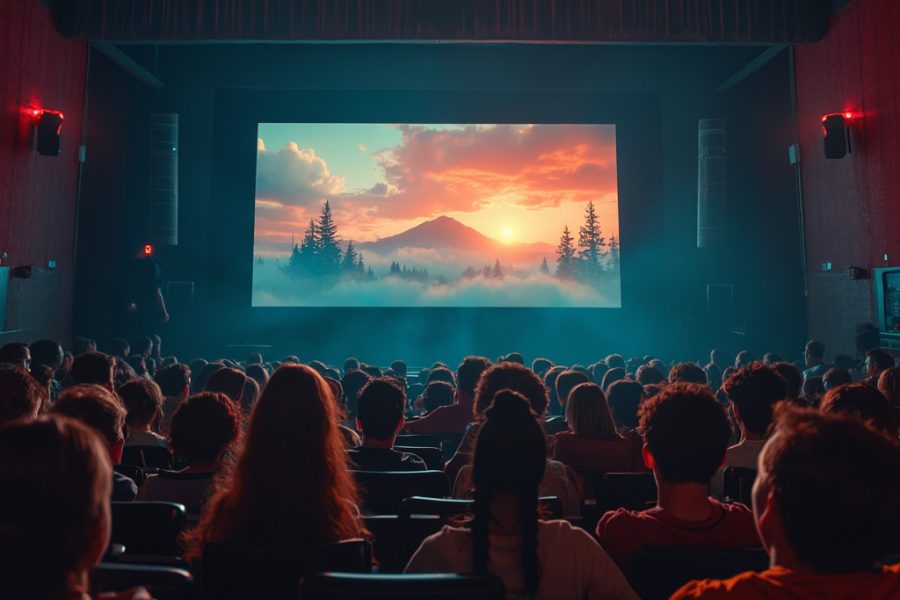The impact of iconic scenes on audiences
Iconic movie scenes have an unparalleled ability to resonate with audiences, often transcending the films they originate from. These moments become etched in the collective memory of viewers, evoking emotions that range from joy to heartbreak. For instance, the unforgettable scene of Rose letting go of Jack in “Titanic” not only defines the film but also encapsulates the essence of love and loss. Such memorable film moments create a shared experience among viewers, fostering discussions and debates long after the credits roll.
Moreover, the impact of these scenes extends beyond mere entertainment; they often serve as cultural touchstones. When a scene becomes iconic, it can influence fashion, language, and even social movements. The famous “I am your father” line from “Star Wars” has permeated popular culture, becoming a reference point in various contexts. This phenomenon illustrates how cinematic best moments can shape societal narratives, making them integral to our understanding of both film and culture.
Defining moments in film history
Cinema history is punctuated by defining moments that have changed the landscape of filmmaking. From the groundbreaking techniques of early silent films to the advent of colour and sound, each era has its iconic scenes that mark significant advancements in storytelling. For example, the shower scene in Alfred Hitchcock’s “Psycho” not only shocked audiences but also redefined the horror genre, influencing countless filmmakers in the years that followed.
These pivotal scenes often reflect the societal issues of their time, making them relevant beyond their cinematic context. The powerful ending of “The Graduate,” with its ambiguous message about the future, resonated with a generation grappling with the disillusionment of the 1960s. Such moments not only define individual films but also encapsulate the zeitgeist of their respective eras, making them essential to understanding the evolution of cinema.
The evolution of cinematic storytelling
The evolution of cinematic storytelling is intricately linked to the development of iconic movie scenes. As filmmakers have experimented with narrative techniques, certain scenes have emerged as benchmarks for innovation. The use of non-linear storytelling in films like “Pulp Fiction” has given rise to memorable film moments that challenge traditional narrative structures, inviting audiences to engage with the story in new ways.
Furthermore, the rise of digital technology has transformed how these scenes are crafted and presented. The breathtaking visuals of “Avatar” and the emotional depth of “The Lion King” showcase how advancements in technology can enhance storytelling. As we continue to witness the evolution of film, it is clear that iconic scenes will remain at the forefront, pushing the boundaries of what cinema can achieve.
Unforgettable characters and their scenes
Unforgettable characters often become synonymous with their iconic scenes, creating a lasting legacy that extends beyond the film itself. Think of the indelible image of Scarlett O’Hara in “Gone with the Wind,” declaring, “As God is my witness, I’ll never be hungry again.” Such powerful declarations not only define the character but also resonate with audiences, making them memorable for generations.
These characters and their scenes often serve as archetypes, influencing how we perceive heroism, love, and sacrifice in cinema. The complex relationship between Tony Stark and his Iron Man suit in the Marvel Cinematic Universe exemplifies how character development can be intertwined with iconic moments, creating a rich tapestry of storytelling that captivates audiences. As we explore the depths of these characters, we uncover the layers of meaning that make their scenes unforgettable.
Cultural significance of film moments
The cultural significance of film moments cannot be overstated. Iconic scenes often reflect societal values, challenges, and aspirations, making them a mirror of the times in which they were created. For instance, the empowering moment in “Wonder Woman” where she steps into the battlefield has become a symbol of female strength and resilience, resonating with audiences worldwide.
Moreover, these moments can spark conversations about important social issues, from race to gender equality. The powerful scene in “12 Years a Slave” where Solomon Northup is brutally whipped serves as a stark reminder of the horrors of slavery, prompting discussions that are crucial for understanding our history. As we analyse these cultural touchstones, we recognise their role in shaping public discourse and influencing future generations.
How iconic scenes shape movie culture
Iconic scenes play a pivotal role in shaping movie culture, influencing not only how films are made but also how they are consumed. The phenomenon of quoting lines from films, such as “Here’s looking at you, kid” from “Casablanca,” illustrates how these moments become part of everyday language, enriching our cultural lexicon. This interplay between film and culture creates a dynamic relationship that continues to evolve.
Furthermore, iconic scenes often inspire fan art, parodies, and even academic studies, demonstrating their far-reaching impact. The enduring popularity of “The Most Iconic Movie Trailers of All Time” showcases how trailers can encapsulate the essence of these scenes, drawing audiences into the cinematic experience. As we celebrate these moments, we acknowledge their power to shape not just movie culture but also our collective identity as viewers and storytellers.
